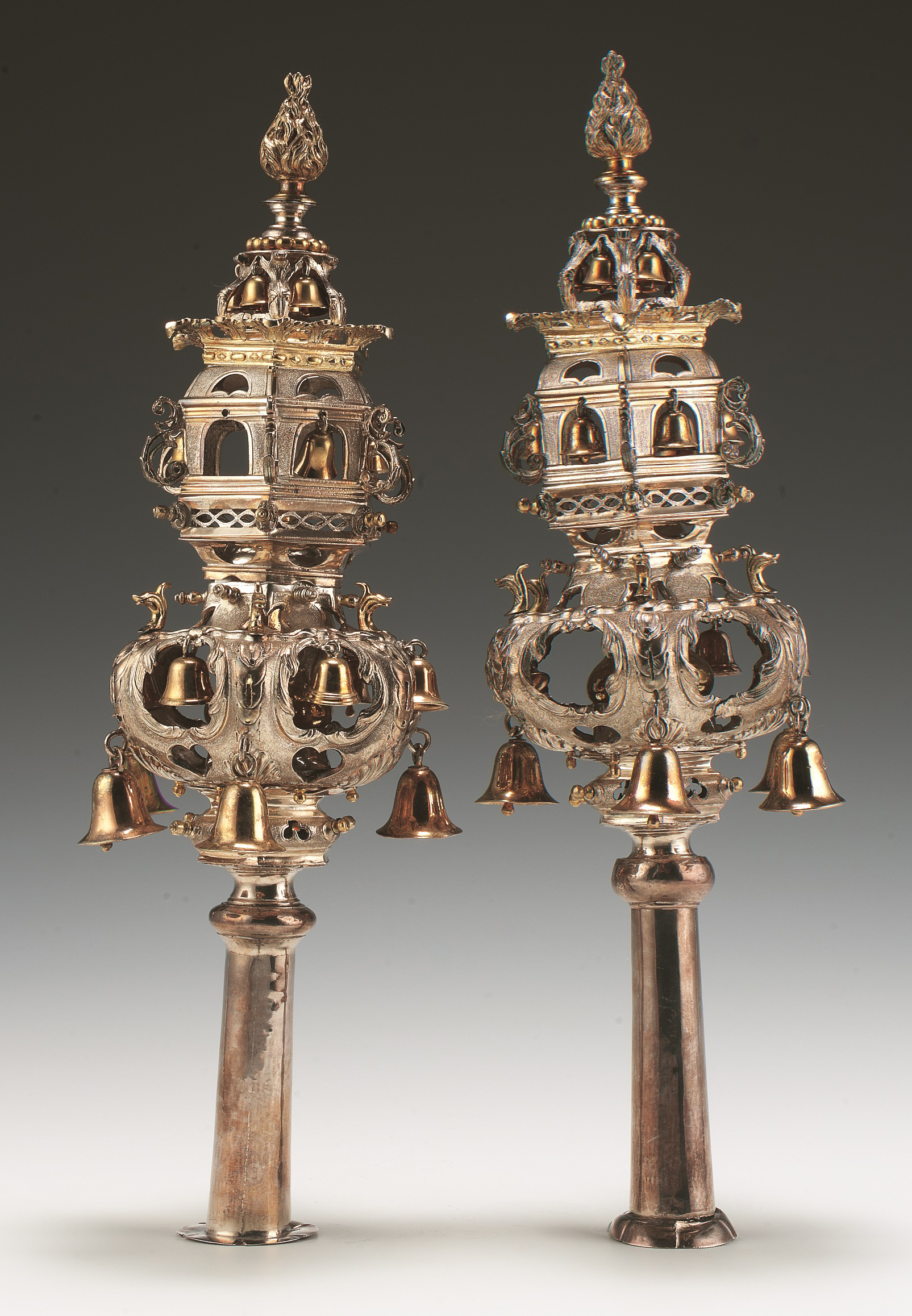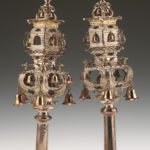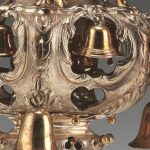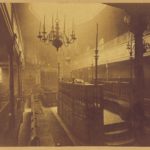Rimmonim
- What can we see?
We can see lots of bells hanging off the rimmonim. We can also see a pineapple at the top of each rimmonim.
Look closely, what can you see?
- What do we know?
This pair of silver rimmonim was made by an unknown artist in the late 17th century in the Netherlands, probably in Amsterdam. They were used at the Hambro synagogue in London which was founded in 1707.
Rimmonim are ornamental objects which decorate the tops of the roller handles of the Torah. The Torah is the holy book of the Jewish people, and it is important to treat the Torah with honour and respect. The Torah is housed in an ark called an Aron Kodesh in Hebrew. The Torah is often decorated with special ornamental objects while housed in the Aron Kodesh. The Torah scroll is wrapped in silk, or another fine fabric, and decorated with a breastplate and rimmonim. This special ornamentation distinguishes the Torah as a sacred object in Judaism.
Rimmonim literally means ‘pomegranates’ in Hebrew. Many rimmonim are styled and shaped to remind Jewish people of pomegranates. Pomegranates are an important symbol in Jewish culture. Pomegranates are said to have 613 seeds, which reminds Jews of the 613 commandments of the Torah. Most rimmonim also have bells on them. Bells are a common symbol in Jewish art and are associated with Aaron, the first High Priest of Judaism. It is said that the High Priest’s robe was adorned with bells and embroidered with pomegranates.
- What do we wonder?
We might wonder how heavy the rimmonim are? We also might wonder what they sound like?
What do you wonder?
- Object File
Object name: Rimmonim
Date: c. 1695
Catalogue number: JM 102
Material(s): Silver & Gilt
Artist: Unknown
Size: 47 cm in height
On display in the Jewish Museum? Yes
The Hambro Synagogue was the second Ashkenazi synagogue in London, the first being The Great Synagogue. Ashkenazi refers to Jews of Eastern European origin. The Hambro Synagogue was founded in 1707 as an independent offshoot of The Great Synagogue. It was founded by Marcus Hamburger in his own house in Magpie Alley (today called St. James’s passage) near Fenchurch Street. In 1725 the synagogue was enlarged to include the area once occupied by the garden of Hamburger’s house. The building was torn down in 1893 to make room for city improvements. In 1899 the Hambro Synagogue community moved to a new building on Adler Street in the East End. The Hambro operated there until it was closed in 1936 and the congregation merged with that of The Great Synagogue.



